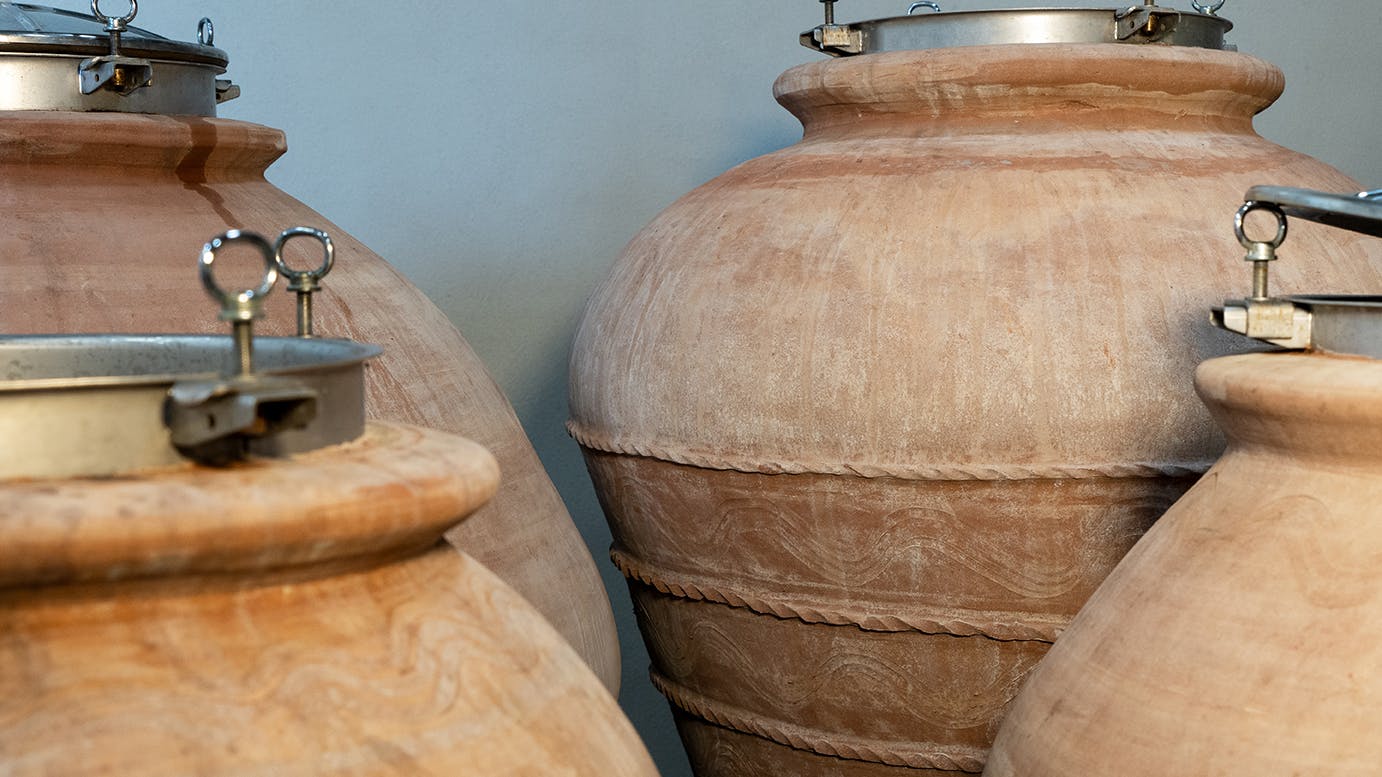Amphorae's Story
The origin of the use of amphorae in winemaking is lost in the mists of time. Today, these vessels allow winemakers to combine tradition with modern know-how, elaborating craft wines that look to the future.
Made of terracotta, i.e. fired clay, and used in Georgia as far back as 8,000 years ago, amphorae provide the opportunity to make modern, innovative wines. Unlike wood, terracotta does not impart aromas and flavors and, unlike steel, it permits perfect and continuous microoxygenation. The porosity allows natural vinification, with no intervention, and amplifies the authentic flavor of the fruit and terroir. Le Anfore di Elena Casadei wines are made using both Georgian amphorae and others made in Impruneta, Tuscany.
Processes
By hand, like back in the day, without any exogenous substance or mechanical process. This is the key principle that lies at the heart of the making and aging of Elena Casadei's Le Anfore collection.
01
Selection
Every year, just before harvesting the grapes, Elena Casadei personally goes to each of the estates. She there tastes with her father the fruits of the chosen vines she had selected for her line.
By tasting and evaluating the consistency of the pulp, skin and pedicel of each plot, Elena gets to know the vintage and decides whether its grapes can be chosen as amphorae.
02
Harvest
The harvest is strictly manual to make a careful selection in the meantime. The grapes are then placed in small boxes, which are only half filled to preserve the grapes, and transported to the cellar. Here a second selection is made on the vibrating sorting tables.
03
Destemming
After the second selection, the grapes are destemmed: berries are separated from the stalks. Then the entry and sampling of the must take place, an analysis necessary to verify its acidity and pH values.
04
Maceration on the skins
Elena selects the amphora she deems suitable for each grape variety, in a specific vintage, basing her choice on the vessels’ specific features - mainly firing and type of clay. Maceration begins when the must and grape skins are placed in the amphorae: at this point, the natural indigenous yeasts in the fruit trigger alcoholic fermentation.
05
Punching-down
During maceration on the skins, the marc must often be pushed to the bottom of the amphora, as they tend to separate from the liquid part and float. Only the sensitivity and skill of the vigneron guide this process. Elena questions all aspects but one: for the wines of Le Anfore, fulling is always manual.
06
Drawing off
Drawing off takes place when the grape pomace is separated from the liquid. Again, the decision of when to draw off rests exclusively with Elena: she tastes the wine as it develops, daily, decides when it is time to stop maceration on the skins, and, later, when to remove the fine lees and decant the wine into the amphorae she has selected for aging.
07
Aging
All Le Anfore wines of Elena Casadei age in terracotta amphorae made in Impruneta, Tuscany. Fitted with stainless steel lids, they protect the wine while allowing continuous and constant microoxygenation thanks to the terracotta.
Quality
Freshness, genuine aromas, crispness, and intensity of color. And the authentic taste of each grape variety, shaped by the vintage and terroir.
Amphorae are neutral vessels, and as such they highlight the qualities, color, and flavor of each grape variety. But that's not all: the amphorae’s thermal inertia and shape allow for natural fermentation, minimize energy waste, and avoid clarification. Today, making amphora wines means treasuring the teachings of the past and looking toward a better, brighter, sustainable future.
